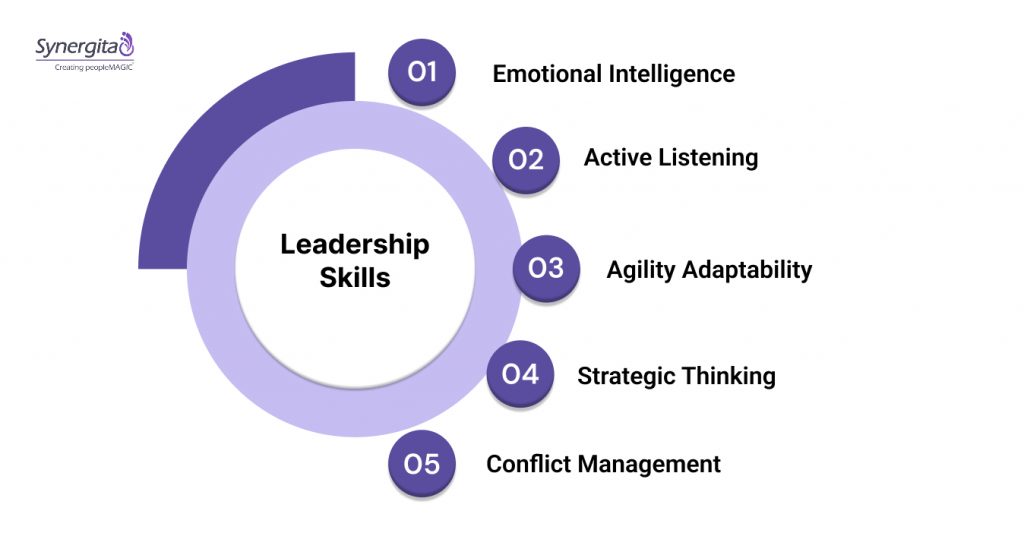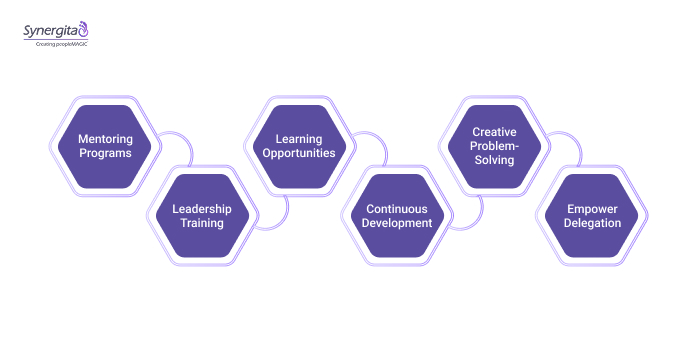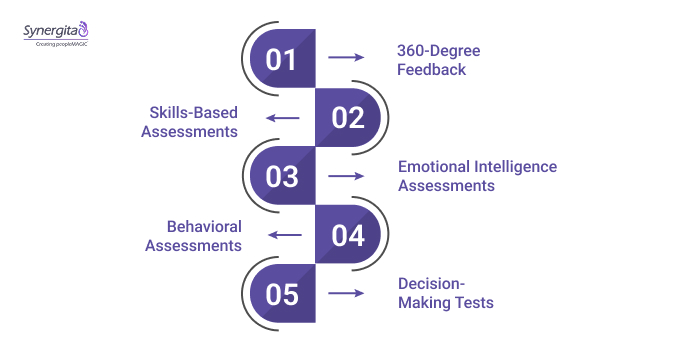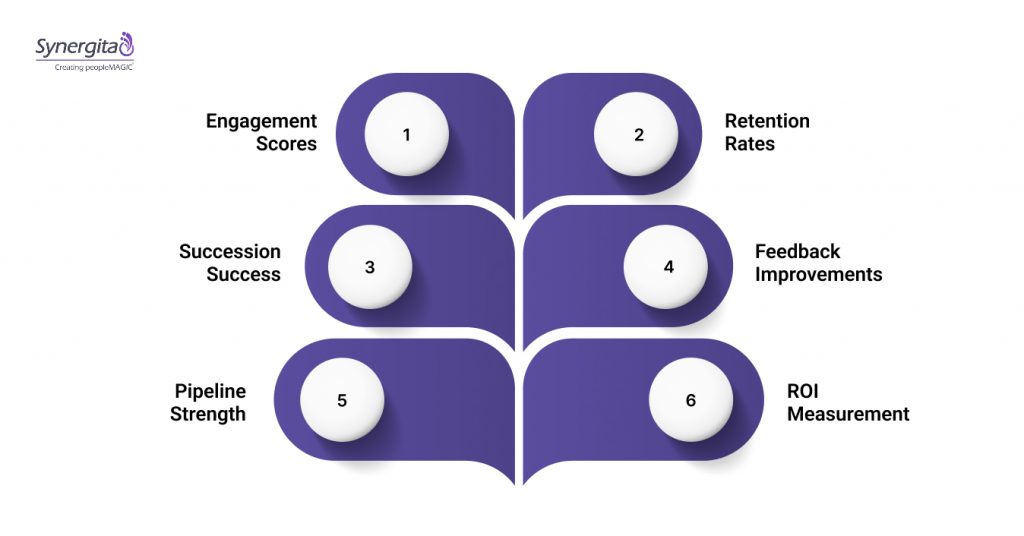In 2025, organizations face a critical leadership crisis. Studies reveal that 77% of companies lack sufficient leadership depth at all levels, and trust in managers has plummeted from 46% to just 29% in two years.
This erosion of leadership capability leads to costly consequences, both in financial performance and employee retention.
Companies investing in leadership development see 25% better business outcomes, yet many still struggle to develop leaders effectively.
The landscape has changed: today’s leaders must navigate hybrid workforces, rapid technological change, and evolving employee expectations.
Developing essential leadership skills in employees is no longer optional; it is vital for sustainable growth and competitive advantage.
This guide explores actionable strategies to build strong, future-ready leaders from within your organization.
Key Takeaways
- Connect leadership development to real business goals: If your leadership program doesn’t move the needle on what matters most in your business, it’s just an activity. Align it tightly, and you’ll see real impact.
- Make learning personal and practical: People don’t grow by sitting through generic sessions. Give them hands-on challenges tailored to their needs, then watch skills shine.
- Feedback isn’t a once-a-year thing: Great leaders evolve through constant, honest conversation and adjustments. Keep the feedback flowing to keep growth alive.
- Your leadership starts at the top: If senior leaders don’t walk the talk, the rest won’t follow. Get them in the game as mentors and role models.
- Technology can speed things up: Tools like Synergita turn leadership programs from guesswork into a clear, measurable journey toward better leaders.
Must-Have Leadership Skills for HRs for Their Employees

Developing leadership skills in employees is about nurturing core competencies that enable them to inspire, influence, and drive results. In 2025, organizations will increasingly prioritize skills that balance human connection with strategic agility.
Fostering these abilities is critical to building leaders who can successfully navigate complexity and change. Here are key leadership skills for 2025:
1. Emotional Intelligence and Self-Awareness
Emotional intelligence (EI) remains the cornerstone of effective leadership, enabling leaders to connect authentically, understand emotions, and create inclusive environments.
Studies report that EI accounts for about 58% of job performance and is a key predictor of success.
For example, TalentSmart highlights that 90% of top performers are high in emotional intelligence, demonstrating its critical role in leadership effectiveness.
Self-awareness helps leaders reflect on their strengths and areas for growth, shaping empathetic and balanced decision-making that drives better team outcomes.
2. Communication and Active Listening
Clear communication and genuine listening build trust and alignment across teams. Future-ready leaders articulate vision effectively and address concerns transparently. These skills foster open dialogue, encourage feedback, and elevate collaboration.
3. Agility and Adaptability
In a rapidly changing business world, leaders must embrace uncertainty and adjust strategies swiftly without losing focus.
Agility allows them to respond resiliently to setbacks and emerging opportunities, keeping teams motivated even during volatility.
4. Strategic Thinking and Decision-Making
Leaders need the ability to anticipate market trends, align goals with organizational vision, and make informed decisions promptly.
Strategic thinkers balance short-term demands with long-term objectives, driving sustainable growth.
5. Conflict Management and Relationship Building
Conflict is inevitable; effective leaders manage disagreements constructively, fostering a culture where diverse ideas propel innovation.
Building strong relationships across teams enhances influence and expands leadership impact.
Also Read: 10 Types of Leadership Styles and their Impact on your OKRs
How to Strengthen Leadership Capabilities in Your Workforce
Developing leadership skills in employees requires a multi-faceted approach that combines formal training, practical experience, ongoing feedback, and personalized growth opportunities.
No single method works in isolation; together, these strategies create a robust learning ecosystem that builds future-ready leaders.
1. Implement Mentoring and Coaching Programs

Mentoring pairs emerging leaders with experienced guides who provide personalized support, career advice, and knowledge transfer.
These relationships foster trust and enable mentees to navigate organizational challenges with confidence.
- Formal Mentorship: Typically, a long-term, structured relationship focused on career growth and leadership development. Mentees gain exposure to organizational politics, decision-making, and strategy.
- Coaching: More goal-oriented and time-bound, coaching addresses specific leadership challenges such as communication, stress management, or team motivation. Professional coaches or internal leaders can facilitate coaching sessions.
- Peer Coaching and Reverse Mentoring: Encourages mutual learning by pairing employees across hierarchical levels or departments, promoting diverse perspectives and fresh ideas.
Studies show mentorship programs increase retention rates by up to 50% and accelerate leadership readiness.
2. Provide Formal Leadership Training and Upskilling
Structured training equips employees with foundational and advanced leadership skills through workshops, courses, and certifications.
- Blended Learning: Combining virtual and in-person sessions allows flexibility while maintaining engagement.
- Targeted Modules: Focus on communication, strategic thinking, conflict resolution, and emotional intelligence.
- Certification Programs: Validate skill acquisition and motivate continuous professional development.
- Microlearning: Short, digestible lessons integrate easily into schedules, fostering ongoing development.
Training alone isn’t enough; successful programs integrate hands-on experience and contextual learning to ensure skills transfer to the workplace.
3. Create Experiential Learning Opportunities
Hands-on experiences are vital in translating theory into practical leadership skills. Experiential learning includes:
- Cross-Functional Projects: Employees lead initiatives that require collaboration across teams, broadening their organizational understanding.
- Job Rotation and Stretch Assignments: Assignments outside regular roles challenge employees to develop new skills and adapt to unfamiliar environments.
- Action Learning Projects: Solving real business problems under supervision provides immediate impact and leadership practice.
- Leadership Simulations and Role-Playing: Safe environments to experiment with decision-making, conflict management, and change communications.
These approaches encourage risk-taking, innovation, and resilience, critical leadership traits in 2025’s dynamic workplaces.
Also Read: How to Use OKRs to Become a Better Leader?
4. Foster Self-Directed Learning and Continuous Development
Leaders who take ownership of their growth embody the mindset essential for agility and adaptability.
- Personal Development Plans (PDPs): Encourage employees to set and regularly update leadership goals aligned with organizational needs.
- Leadership Book Clubs and Knowledge Sharing: Promote learning cultures where insights are exchanged openly.
- Conferences and Networking: Exposure to industry trends and external leadership thought fosters broader perspectives.
- Self-Assessment Tools: Reflection and feedback loops help leaders recognize growth opportunities and celebrate progress.
Embedding continuous learning increases retention and drives sustainable leadership pipelines.
5. Encourage Innovation and Creative Problem-Solving
Leaders must inspire creativity to drive business transformation.
- Innovation Challenges and Hackathons: Platforms for employees to propose and test new ideas.
- Creative Thinking Workshops: Facilitate techniques like design thinking and lateral problem-solving.
- Promoting Failure Tolerance: Cultivating an environment where calculated risks are encouraged and learning from mistakes is valued.
This empowers employees to lead with vision and courage, vital for competitive advantage in uncertain times.
6. Empower Decision-Making Through Delegation
Confidence in decision-making grows when employees practice autonomy under supportive conditions.
- Progressive Responsibility: Gradually increasing complexity in assignments builds competence safely.
- Decision-Making Frameworks: Tools and models support structured thinking and reduce analysis paralysis.
- Accountability and Feedback: Clear expectations and constructive input reinforce learning and ownership.
- Building Critical Thinking: Encouraging questioning and diversity of thought sharpens leadership judgment.
Effective delegation not only develops skills but also frees senior leaders to focus on strategic priorities.
Also Read: Performance & Leadership Lessons from Trekking in the Himalayas
How to Assess Current Leadership Capabilities in Your Organization

Effective leadership assessments provide a clear picture of who is ready to lead and who needs further development.
Organizations that use data-driven assessments report 25% higher success in leadership outcomes and better succession planning.
With complex roles requiring strategic thinking, emotional intelligence, and adaptability, a precise evaluation helps customize development paths.
Popular Leadership Assessment Methods in 2025:
1. 360-Degree Feedback
Collects anonymous input from peers, subordinates, and managers. This comprehensive feedback reveals leadership behavior patterns, decision-making style, and interpersonal effectiveness. It highlights blind spots and areas for improvement.
2. Skills-Based Assessments
Evaluates competencies like communication, delegation, vision setting, and conflict management through situational judgment tests or simulations. These tools assess how leaders perform under pressure and in real-world scenarios.
3. Emotional Intelligence (EI) Assessments
Measures self-awareness, empathy, and relationship management, which are critical for trust-building and team motivation. High EI scores correlate with better leadership effectiveness.
4. Personality and Behavioral Assessments
Tools such as Myers-Briggs, Hogan Assessments, or Korn Ferry predict leadership style, cultural fit, and potential for growth by analyzing traits and behaviors.
5. Cognitive and Decision-Making Tests
Assess problem-solving skills, critical thinking, and the ability to make sound decisions under pressure.
Also Read: 13 Best Self-Assessment Examples: Self-Evaluation & Appraisal Comments
Best Practices for Implementing Assessments
- Use a combination of methods for a 360-degree perspective.
- Align assessments with your company’s leadership competencies and strategy.
- Communicate the purpose and confidentiality clearly to build trust.
- Regularly reassess leaders to track progress and adjust development plans.
- Engage leaders at all levels to foster a culture of continuous growth.
How Synergita Supports Assessment
Synergita’s platform integrates 360 feedback, AI-based sentiment analysis, and developmental tracking, helping HR and leadership teams spot potential early and plan precise growth paths.
Building a Scalable Leadership Development Framework
A leadership development framework provides clarity and consistency, enabling organizations to develop leaders systematically rather than relying on ad hoc training.
Companies with structured leadership programs are 12 times more likely to achieve strong business outcomes and 13 times more likely to outperform competitors.
This approach also supports and improves succession planning and employee engagement by offering clear growth opportunities. Here are key components of an effective framework:
1. Assessment of Current Capabilities
Start by evaluating leadership skills and readiness using tools like 360-degree feedback and skills assessments to identify development needs.
2. Defining Leadership Competencies
Establish the specific skills, behaviors, and attributes that define success in your organization’s leadership roles.
These competencies may include emotional intelligence, strategic agility, decision-making, and communication.
3. Setting Clear Objectives
Align leadership development goals with business strategy using SMART (Specific, Measurable, Achievable, Relevant, Time-bound) criteria.
Clear objectives ensure development efforts target real organizational needs.
4. Personalized Development Plans
Design individual plans tailored to each leader’s strengths, gaps, and career aspirations. Incorporate a mix of learning methods such as formal training, mentoring, job rotations, and stretch assignments.
5. Action Learning Projects
Integrate real-world problem-solving exercises where leaders apply skills in authentic contexts, fostering practical experience and immediate impact.
- Utilizing Technology
Leverage digital platforms and e-learning tools for scalable training, continuous feedback, and progress tracking. Technologies like Synergita’s platform empower HR to align leadership development with overall performance management seamlessly.
Building the Framework for Success
To build a sustainable framework, involve senior leadership in defining competencies and objectives.
- Involve Senior Leaders Early: Get senior leaders to define key leadership skills and goals. Their support ensures the program aligns with business priorities and gains traction.
- Review and Adapt Regularly: Keep the framework flexible. Regularly update it based on market trends and company needs to stay effective.
- Foster Ongoing Learning: Leadership development is a continuous journey, not a one-off event. Build a culture where learning and growth happen every day.
- Set the Tone with Leadership: When senior leaders actively participate and hold teams accountable, they inspire employees to engage and grow.
- Build a Future-Ready Talent Pipeline: Strong leadership frameworks prepare high-potential employees to face the coming challenges and take on bigger roles confidently.
Also Read: Four Steps That Transform a Worker into a Leader
Measure ROI and Success of Leadership Development Programs

Leadership development in employees may take time to manifest, but tracking key indicators helps maintain program momentum and guides ongoing improvements.
Organizations that systematically measure leadership outcomes are more likely to achieve higher productivity, engagement, and retention. Key metrics to track:
1. Employee Engagement Scores
Engaged employees are more productive and loyal. Leadership directly influences engagement; strong leaders create work environments where employees thrive.
Use anonymous surveys before and after programs to capture changes in engagement levels.
2. Retention and Turnover Rates
Effective leadership reduces employee turnover, saving recruitment costs and avoiding productivity disruption.
Organizations with solid leadership development see a reduction in turnover rates among key talent. Tracking retention trends post-program helps measure lasting impact.
3. Succession Planning Success
Filling leadership positions internally demonstrates a strong leadership pipeline. Monitor the percentage of key roles filled by program graduates versus external hires. A rise in internal promotions is a positive indicator.
4. 360-Degree Feedback Improvements
360-degree feedback reveals changes in leadership behavior over time. Look for consistent increases in scores related to communication, decision-making, and team management.
5. Leadership Pipeline Strength
Assess the number of employees identified as ready for higher leadership roles within one to two levels. A robust pipeline signals effective talent development.
6. Return on Investment (ROI)
Calculate the financial gains from productivity, retention, and innovation improvements against program costs. Though complex, ROI measurement provides compelling evidence to stakeholders.
Also Read: What Key Performance Metrics for Managers are Beneficial in 2025?
Best Practices for Measurement
- Establish baseline data before program launch for accurate comparison.
- Use a mix of quantitative and qualitative data for a holistic view.
- Apply models like the Kirkpatrick Model to evaluate reaction, learning, behavior change, and results in a structured way.
- Engage managers to reinforce new skills and support behavior change.
- Regularly report findings to executive sponsors to maintain support.
Synergita’s platform facilitates measuring leadership development impact by integrating continuous feedback, goal tracking, and advanced analytics.
Also Read: Employee Performance Management Best Practices
Conclusion
Investing in leadership development is essential for building resilient, adaptable, and visionary leaders who can navigate today’s complex business landscape.
By aligning programs with strategy, personalizing learning, fostering practical experiences, and leveraging data-driven insights, organizations unlock the full potential of their people.
Continuous leadership growth fuels innovation, engagement, and sustainable success.
Take the first step towards transforming your leadership pipeline today.
Explore Synergita’s comprehensive platform to empower your employees with the leadership skills needed to drive your organization forward.
Frequently Asked Questions
1. What is a leadership development program?
A leadership development program is a structured series of training, coaching, mentoring, and hands-on experiences designed to build essential leadership skills. It focuses on practical growth, preparing employees to lead effectively while aligning with organizational priorities and fostering continuous improvement.
2. Are all leadership programs the same?
No, leadership programs differ widely in duration, content, delivery style, and target audience. Customization is crucial to address your organization’s unique culture, goals, and skill gaps. One size definitely does not fit all when it comes to effective leadership development.
3. Can leadership be taught, or is it innate?
Leadership can absolutely be taught. While some traits may be natural, structured development through coaching, training, and feedback plays a major role in cultivating effective leaders who can adapt, inspire, and influence others positively.
4. How long does it take to see results?
You’ll often see initial improvements within a few months, but lasting leadership change typically requires 6 to 12 months or longer. Continuous learning and real-world practice help embed new behaviors and build a strong leadership pipeline over time.
5. Is on-the-job learning enough for leaders?
Experience is valuable, but combining it with formal learning, mentoring, and assessment is essential. This integrated approach accelerates development, uncovers blind spots, and equips leaders with the skills needed for complex challenges.
6. Do senior leaders benefit from leadership programs?
Absolutely. Senior leaders must continuously refresh their skills to stay effective, model desired behaviors, and inspire teams. Leadership development is lifelong and helps executives adapt to evolving business landscapes.
7. Does leadership development really impact business performance?
Yes. Research shows effective leadership development improves employee engagement, retention, innovation, and financial performance—disproving the myth that leadership training is a “soft” or non-essential investment.
8. How do you measure ROI?
Measure ROI by tracking engagement, promotion rates, retention, leadership competency growth, and overall business outcomes. Using data helps justify program investments and refine strategies for maximizing impact.

